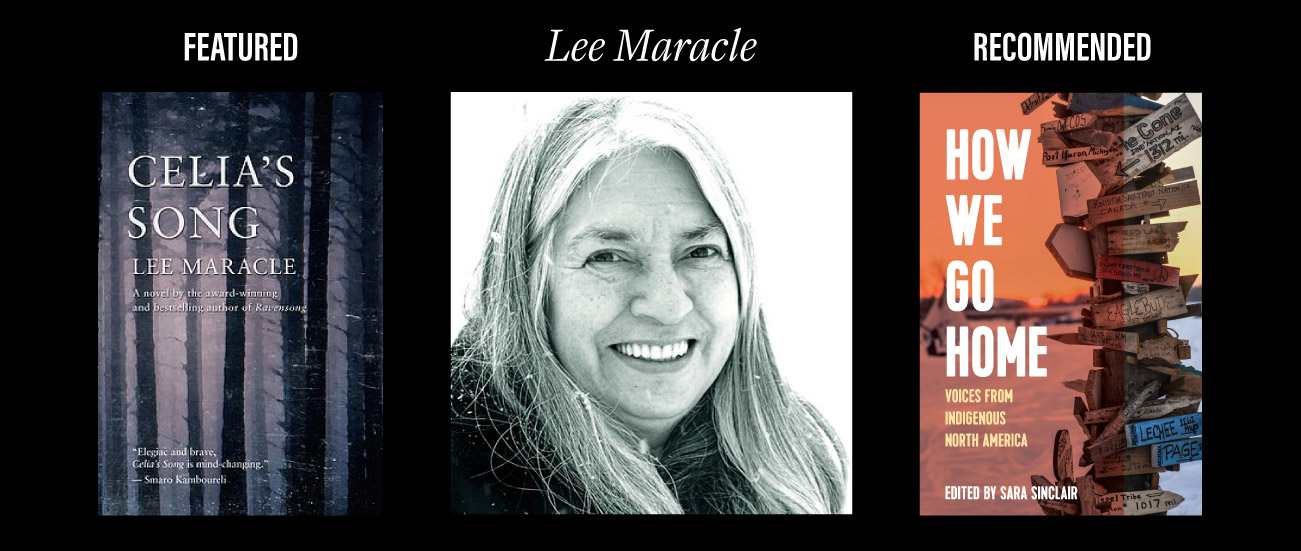
Lee Maracle’s Featured Book
Celia’s Song
Finalist, 2020 Neustadt International Prize for Literature
Longlisted, 2015 CBC Canada Reads
Shortlisted, 2015 ReLit Award
Mink is a witness, a shape shifter, compelled to follow the story that has ensnared Celia and her village, on the West coast of Vancouver Island in Nuu’Chahlnuth territory. Celia is a seer who — despite being convinced she’s a little “off” — must heal her village with the assistance of her sister, her mother and father, and her nephews. While Mink is visiting, a double-headed sea serpent falls off the house front during a fierce storm. The old snake, ostracized from the village decades earlier, has left his terrible influence on Amos, a residential school survivor. The occurrence signals the unfolding of an ordeal that pulls Celia out of her reveries and into the tragedy of her cousin’s granddaughter. Each one of Celia’s family becomes involved in creating a greater solution than merely attending to her cousin’s granddaughter.
Celia’s Song relates one Nuu’Chahlnuth family’s harrowing experiences over several generations, after the brutality, interference, and neglect resulting from contact with Europeans.
Buy the Book:
Owl’s Nest Books | Shelf Life Books
Lee Maracle’s Recommended Book
How We Go Home: Voices from Indigenous North America by Sara Sinclair
In myriad ways, each narrator’s life has been shaped by loss, injustice, and resilience—and by the struggle of how to share space with settler nations whose essential aim is to take all that is Indigenous.
Hear from Jasilyn Charger, one of the first five people to set up camp at Standing Rock, which kickstarted a movement of Water Protectors that roused the world; Gladys Radek, a survivor of sexual violence whose niece disappeared along Canada’s Highway of Tears, who became a family advocate for the National Inquiry into Missing and Murdered Indigenous Women and Girls; and Marian Naranjo, herself the subject of a secret radiation test while in high school, who went on to drive Santa Clara Pueblo toward compiling an environmental impact statement on the consequences of living next to Los Alamos National Laboratory. Theirs are stories among many of the ongoing contemporary struggles to preserve Indigenous lands and lives—and of how we go home.
How We Go Home is a testament to modern-day Indigenous revitalization, often in the face of the direst of circumstances. Told as firsthand accounts on the frontlines of resistance and resurgence, these life stories inspire and remind that Indigenous life is all about building a community through the gifts we offer and the stories we tell. — Niigaan Sinclair, associate professor, Department of Native Studies at the University of Manitoba and columnist, Winnipeg Free Press
Buy the Book:
